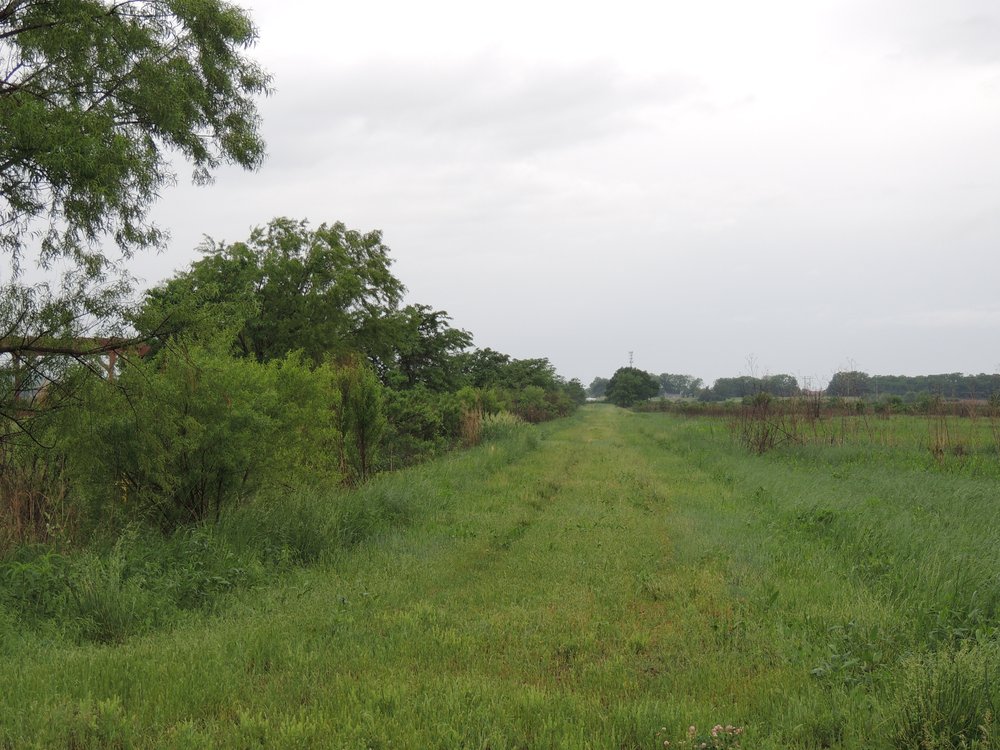 The Haskell-Baker wetlands in Lawrence Kansas are paradise. Most marshlands are paradise because they contain enchanting and secretive birds, like rails and bitterns. But there's something particularly magic about this almost 600 acres of land, located just off of 31st street in the southern part of this college town in prairie country.
The Haskell-Baker wetlands in Lawrence Kansas are paradise. Most marshlands are paradise because they contain enchanting and secretive birds, like rails and bitterns. But there's something particularly magic about this almost 600 acres of land, located just off of 31st street in the southern part of this college town in prairie country.
I was in Lawrence for the ASLE conference (Association for LIterature and the Environment). I'm not a conference person--but if ever there was a conference for me, this is it. Friday afternoon is devoted to fieldtrips, one of which is to kayak down the Kansas River. And, a ten-minute drive from my extraordinarily bleak dorm room, sits the Haskell-Baker wetlands (also known as the Wakarus Wetlands).
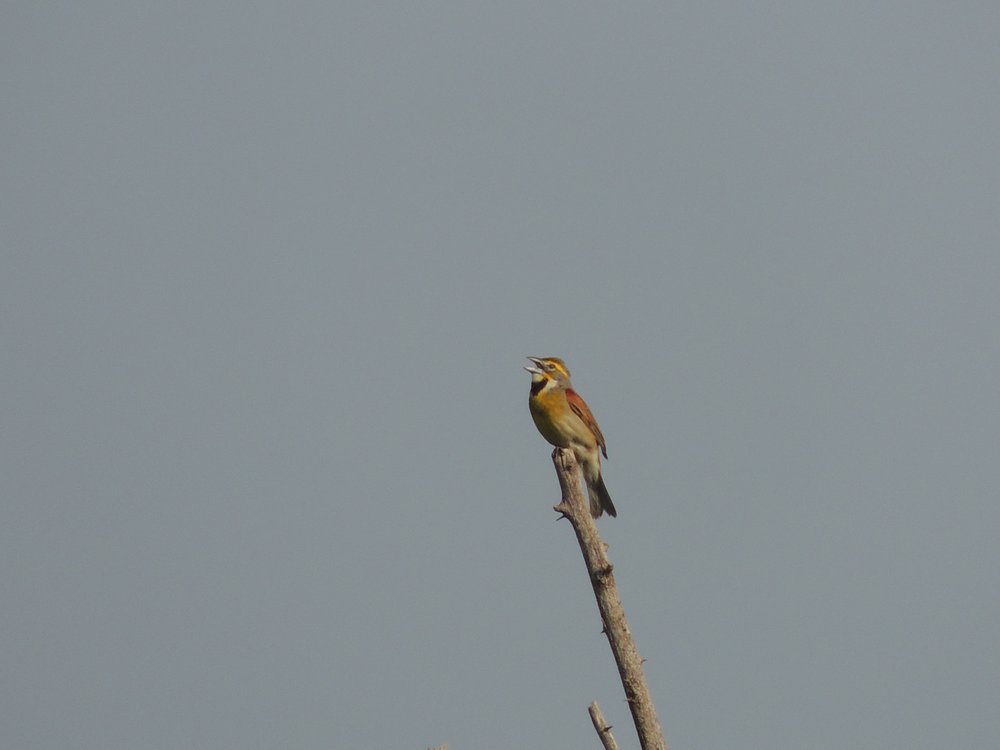 DickcisselAt 6 every morning, I shared the marshlands with the clack of rails and the witchita witchit witchita calls of common yellowthroats. I'm enchanted by the blues: of the Indigo Bunting so vivid against the skyline, but also of little blue herons, poking through the grasses. It's exciting to see such vibrancy in Tanagers and Orchard Orioles, and then one lone Yellow-crowned Night Heron. As I walk down the flat, green path, bordered by wet areas choked with reeds and cattails, there’s a call that is new to me. I listen to the chirr of the bird with a black throat that’s just bigger than a sparrow. Soon I identify it: Dickcissel (not one of the best bird names out there). It’s a common, vocal bird in the prairies, and to me, it’s a treat. I discover a blind, which allows me quiet views onto the marsh. Every morning of the conference, I walk with the sure happiness of someone who knows she will see something special.
DickcisselAt 6 every morning, I shared the marshlands with the clack of rails and the witchita witchit witchita calls of common yellowthroats. I'm enchanted by the blues: of the Indigo Bunting so vivid against the skyline, but also of little blue herons, poking through the grasses. It's exciting to see such vibrancy in Tanagers and Orchard Orioles, and then one lone Yellow-crowned Night Heron. As I walk down the flat, green path, bordered by wet areas choked with reeds and cattails, there’s a call that is new to me. I listen to the chirr of the bird with a black throat that’s just bigger than a sparrow. Soon I identify it: Dickcissel (not one of the best bird names out there). It’s a common, vocal bird in the prairies, and to me, it’s a treat. I discover a blind, which allows me quiet views onto the marsh. Every morning of the conference, I walk with the sure happiness of someone who knows she will see something special.
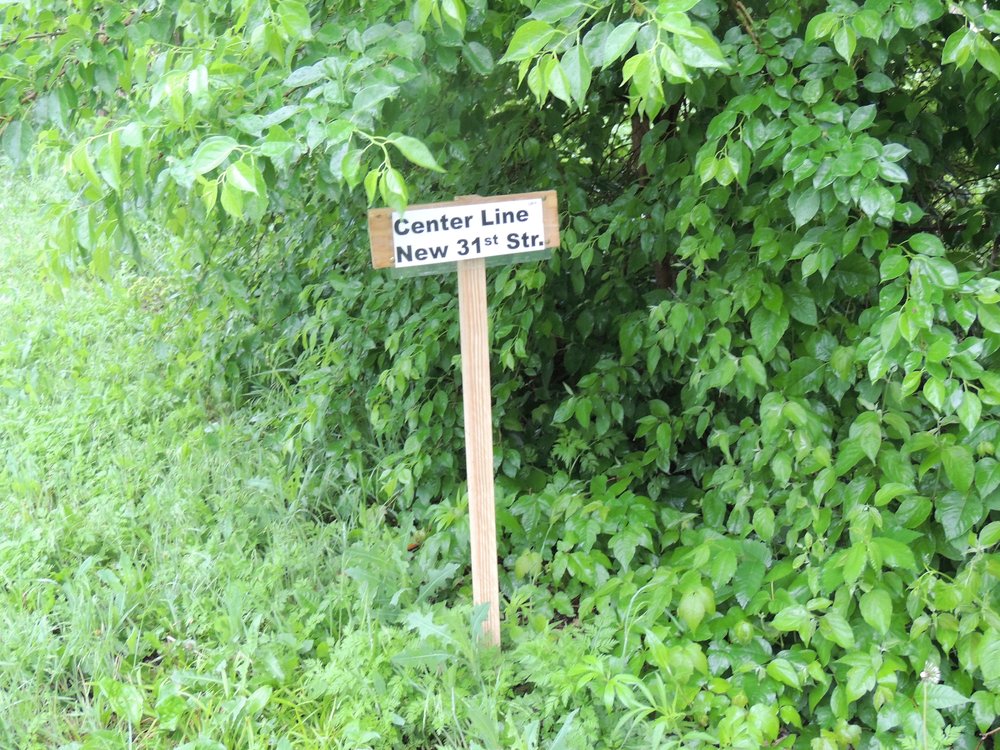 Noooooo!One morning there is something new on the trail. Not coyote scat or a snake or a cottontail vanishing into the grass. There's a sign. The sign tells me that 31st street is going to cut into this marsh, railroad through this lush place so alive with breeding birds. I stop and stare at the sign and I feel something itch behind my eyes. How can a road cut into wetlands--I naively believe they are protected. The thought makes me dizzy. If this land rested near me I'd spend umpteen hours fighting the proposed road. Turns out locals have been fighting this construction for twenty years--with intelligence and persistence. But it looks like the fight has ended; the road is going to be built.
Noooooo!One morning there is something new on the trail. Not coyote scat or a snake or a cottontail vanishing into the grass. There's a sign. The sign tells me that 31st street is going to cut into this marsh, railroad through this lush place so alive with breeding birds. I stop and stare at the sign and I feel something itch behind my eyes. How can a road cut into wetlands--I naively believe they are protected. The thought makes me dizzy. If this land rested near me I'd spend umpteen hours fighting the proposed road. Turns out locals have been fighting this construction for twenty years--with intelligence and persistence. But it looks like the fight has ended; the road is going to be built.
I have just gotten to know this place, and yet I’m still a bit heartbroken. Every chunk taken out of wild and precious places hurts.
 Indigo BuntingBut the truth is this place is not really wild. It's a piece of land, I learn, with a long history. This marsh rests in the Wakarusa Valley and was originally 18,000 acres. These remaining 600 acres are adjacent to the Haskell Indian Nations University. In 1884, when the school was founded, it belonged to them. Giving the Indians a chunk of swampland was not a generous gesture--it was useless land. But they drained the swamp and made it into agricultural land. In the 30s, it fell into disuse and was given back to the city. (For a fuller history, read this clear blog post from Haskell graduate, Jessica Lackey). That the city now wants to build a highway, supported by $192 million from the governor, through what remains of the wetlands seems absurd. There are lots of places to build roads. Why here? Perhaps because we still see wetlands as throwaway land. Kansas DOT will fill, then pave over all of this rich bird habitat.
Indigo BuntingBut the truth is this place is not really wild. It's a piece of land, I learn, with a long history. This marsh rests in the Wakarusa Valley and was originally 18,000 acres. These remaining 600 acres are adjacent to the Haskell Indian Nations University. In 1884, when the school was founded, it belonged to them. Giving the Indians a chunk of swampland was not a generous gesture--it was useless land. But they drained the swamp and made it into agricultural land. In the 30s, it fell into disuse and was given back to the city. (For a fuller history, read this clear blog post from Haskell graduate, Jessica Lackey). That the city now wants to build a highway, supported by $192 million from the governor, through what remains of the wetlands seems absurd. There are lots of places to build roads. Why here? Perhaps because we still see wetlands as throwaway land. Kansas DOT will fill, then pave over all of this rich bird habitat.
ASLE has, to my delight, given money to the efforts to preserve these wetlands. Jessica Lackey, a member of the Cherokee Nation, spoke with tremendous clarity about the work she has done as she organizes others to think about environmental issues with a Native perspective. She's done an analysis of planting prairie grasses on the campus (rather than the fertilized lawn that needs constant mowing). Geographer Mike Caron offered a clear history of the site and the lives of the Native children brought to the school to be educated: the marshlands were the place they turned to in order to continue their rituals, and as solace. Others offered a sense of the ongoing fight--and they seem a bit worn down, as if this latest victory for the Kansas Department of Transportation might be final. They have all engaged in a long fight, which for someone young like Jessica is almost her entire life.
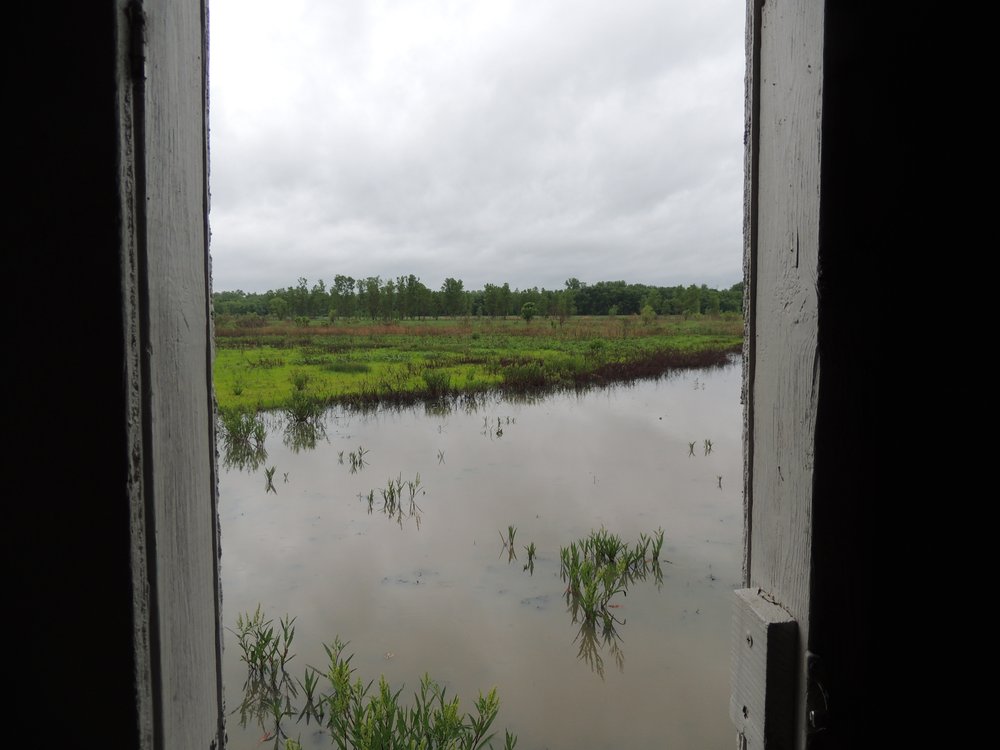 View from a blind onto the marshThis all reminds me of the long fight of the Hudson River Valley: Storm King. For 28 years environmentalists, fishermen, and those who love the Valley fought against GE building a pump storage station on the summit of Storm King Mountain. One of the great fighters in that case and for other Hudson River issues was Pete Seeger. What would he say? Keep on.
View from a blind onto the marshThis all reminds me of the long fight of the Hudson River Valley: Storm King. For 28 years environmentalists, fishermen, and those who love the Valley fought against GE building a pump storage station on the summit of Storm King Mountain. One of the great fighters in that case and for other Hudson River issues was Pete Seeger. What would he say? Keep on.
On my last day in Lawrence I make a final pilgrimage to this place I find so magical and that I’ll probably never see again. There's a father and his three and a half year old daughter walking the causeway. Olivia's got a pink barrette in her hair. She's gregarious, asking me what I have seen and we discuss footprints in the mud. She starts to head out with me, to see more things and her father stops her, "we're going home now." We hesitate for a moment, and he asks where I'm from; New York. This is a great place to raise a kid, I note, and he nods. "Are we in Kansas?" Olivia asks. I almost laugh. We are. And it's beautiful.
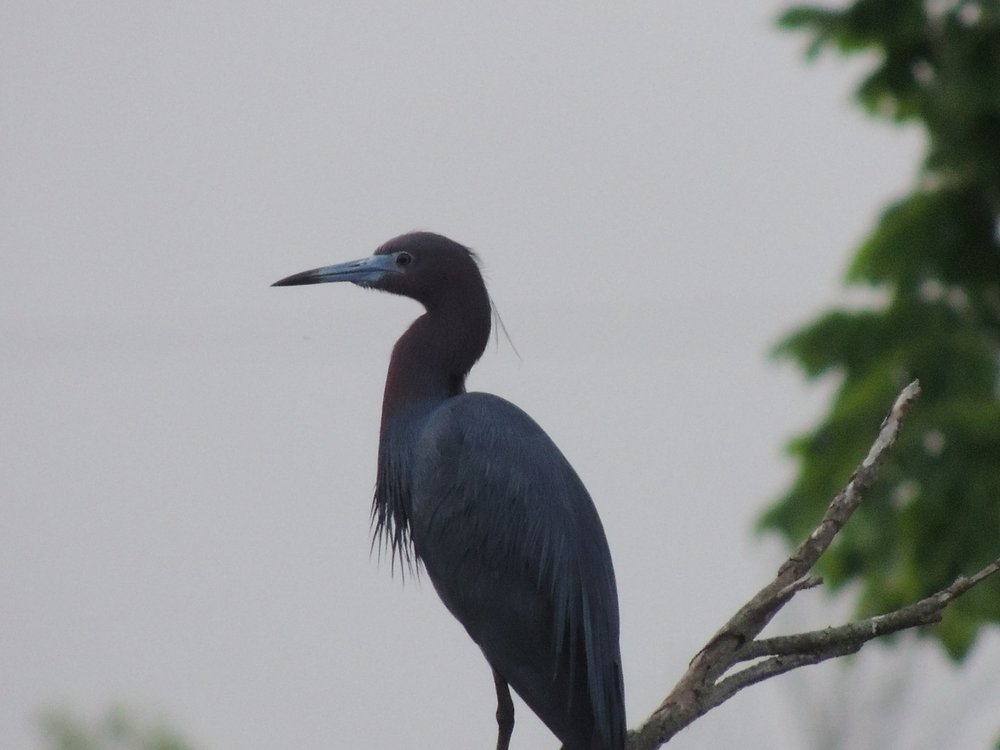 Little Blue Heron I walk further out into the swamp and three young men, jogging, pass me. "It's snake city down there," one says cheerfully. I see a water snake stretched in the path and look for brothers and sisters. I turn to leave, saying goodbye to this place that might be paved over as early as this summer. I wish—knowing that wishing is not enough--that the marshlands continue on with the memories of those Native children; as a place for Olivia to grow up; as a perfect place for those boys to run; as the ideal environment for birders eager to see special birds. Keep on my Kansas friends. Keep on.
Little Blue Heron I walk further out into the swamp and three young men, jogging, pass me. "It's snake city down there," one says cheerfully. I see a water snake stretched in the path and look for brothers and sisters. I turn to leave, saying goodbye to this place that might be paved over as early as this summer. I wish—knowing that wishing is not enough--that the marshlands continue on with the memories of those Native children; as a place for Olivia to grow up; as a perfect place for those boys to run; as the ideal environment for birders eager to see special birds. Keep on my Kansas friends. Keep on.